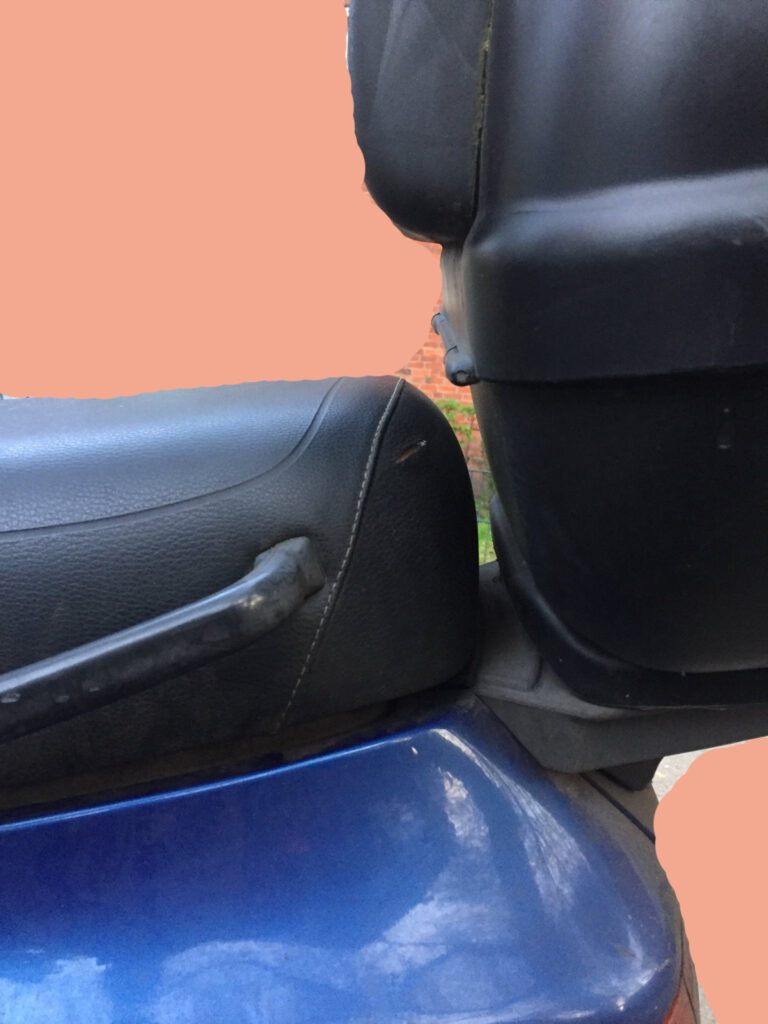



[Hamburg-Germany] Tracking-Technik an Motorroller entdeckt
Im Sitz eines Motorrollers wurde in den vergangenen Tagen ein
sogenanntes „AirTag“ der Firma Apple gefunden. Der Roller wird genutzt von einer Hamburger Anarchistin, die in der Vergangenheit bereits von Überwachungs- und Ermittlungsmaßnahmen betroffen war.
Das kleine, flache Gerät von einem ungefähren Durchmesser von 3
Zentimetern und einer Höhe von weniger als 1 Zentimeter wurde durch einen augenscheinlich mit einem Cuttermesser oder ähnlichem angebrachten
Schlitz ins das Sitzpolster des Motorrollers gesteckt.
Die Vermutung, dass eine Ermittlungsbehörde oder der Verfassungsschutz für die Platzierung verantwortlich ist liegt nahe.
Apple vertreibt die AirTags ursprünglich zu dem Zweck, Gegenstände wie
Schlüsselbund, Brieftasche oder ähnliches in der unmittelbaren Umgebung des eigenen Smartphones zu orten. Es funktioniert über Bluetooth und hat zunächst eine unmittelbare, maximale Reichweite von ungefähr 100 Metern im Freien.
Zum Instrument, die Bewegungen einer anderen Person nachzuvollziehen wird es erst über die sogenannte „Wo ist?“-Funktion von Apples iPhones.
Wird diese Funktion aktiviert, koppelt sich das „verlorene“ AirTag mit fremden iPhones oder iPads (mit aktivierter Bluetooth-Funktion) in der
Umgebung und gibt den Standort über das „Wo ist?“-Netzwerk an das mit dem Tracker gekoppelte Apple-Gerät weiter – und bei der inflationären Benutzung von Apple-Produkten und Bluetooth-Kopfhörern zeichnen diese
kleinen Geräte dann insbesondere im urbanen Raum ein potenziell ziemlich lückenloses Bewegungsprofil.
Die Batterien der AirTags haben eine Lebensdauer von ungefähr einem Jahr.
Laut Apple geben die Tracker im „Wo ist?“-Modus in regelmäßigen
Abständen ein (leises) Piepen von sich – was z.B. durch die Polsterung
des Rollersitzes ausreichend gedämpft gewesen sein dürfte.
Auch soll es möglich sein, mittels der „Wo ist?“-App in iPhones und der App „Airguard“ für Android „verloren“ gestellte AirTags zu
identifizieren. Zu diesen Möglichkeiten gibt es z.B. auf der
IT-Plattform golem.de einige Artikel, deren Lektüre wir empfehlen.
Die Seriennummer des AirTags lässt theoretisch zu, das ursprünglich mit ihm gekoppelte Gerät zu identifizieren – doch ist es schwer möglich an Daten zu kommen, über die der Apple-Konzern die Kontrolle hat.
AirTags kosten derzeit ungefähr 40 Euro pro Stück – und sind damit die mit Abstand günstigste Möglichkeit für Ermittlungsbehörden solche Geräte
zur Überwachung zu benutzen. Eine gewisse Ausfallquote, Lücken in der Überwachung oder eine eingeschränkte Nutzbarkeit der Daten in Strafverfahren schätzen wir als damit für die Behörden unerhebliche Gründe ein, die Geräte nicht zu benutzen.
Also: checkt eure Autos, Roller, Fahrräder und so weiter.
Wir freuen uns über technische Ergänzungen oder eigene
Erfahrungsberichte.
Und setzen wir der Paranoia unsere Wut, Entschlossenheit, Vorsicht und Solidarität entgegen.
Weiterführende Informationen:
https://www.golem.de/news/airguard-im-test-die-beste-app-um-airtags-unte…
https://suche.golem.de/search.php?l=10&q=airtag
—————-
Tracking technology discovered on motor scooter
In the last few days, a so-called “AirTag” from Apple was found in the seat of a scooter. The scooter is used by an anarchist from Hamburg, who has already been the subject of Surveillance and investigative measures in the past. The small, flat device of an approximate diameter of 3 centimeters and a height of less than 1 centimeter, was placed through a slit in the seat cushion, which was apparently made with a cutter knife or similar. The assumption is that an investigative agency or the Verfassungsschutz (german interior secret service) is responsible for the placement. Apple originally marketed the AirTags for the purpose of tagging items such as a bunch of keys, wallet or similar in the immediate vicinity of one’s of one’s smartphone. It works via Bluetooth and has an immediate maximum range of about 100 meters outdoors.
It only becomes a tool for tracking the movements of another person via the “Where is? app. When this function is activated, the “lost” AirTag pairs with other iPhones or iPads (with activated Bluetooth function) in the vicinity and passes the location via the “Where is?” network to the Apple device paired with the tracker. Apple device paired with the tracker – and with inflationary use of Apple products and Bluetooth headphones, these small devices then record a potentially fairly complete movement profile, especially in urban areas. The batteries of the AirTags have a lifespan of about one year. According to Apple, the trackers emit a (quiet) beep in “Where is?” mode at regular intervals – which is sufficiently muffled by the upholstery of the scooter seat, for example. It should also be possible, by means of the “Where is?” app in iPhones and the “Airguard” app for Android to identify “lost” AirTags. There are some articles about these possibilities on the IT platform golem.de, which we recommend reading.
The serial number of the AirTag theoretically allows to identify the device that was originally paired with it – but it is difficult to get hold of the data over which the Apple group has control. AirTags currently cost around 40 euros each – making them by far the cheapest way for investigators to use such devices for surveillance. A certain failure rate, gaps in the surveillance or a limited usability of the data in criminal proceedings, we estimate that these are insignificant reasons for the authorities not to use the devices. So: check your cars, scooters, bikes and so on.
We are happy to receive technical supplements or your own experience reports. And let’s oppose the paranoia with our anger, determination, caution and solidarity.
Further information: https://www.golem.de/news/airguard-im-test
Actforfree receive and spread.
